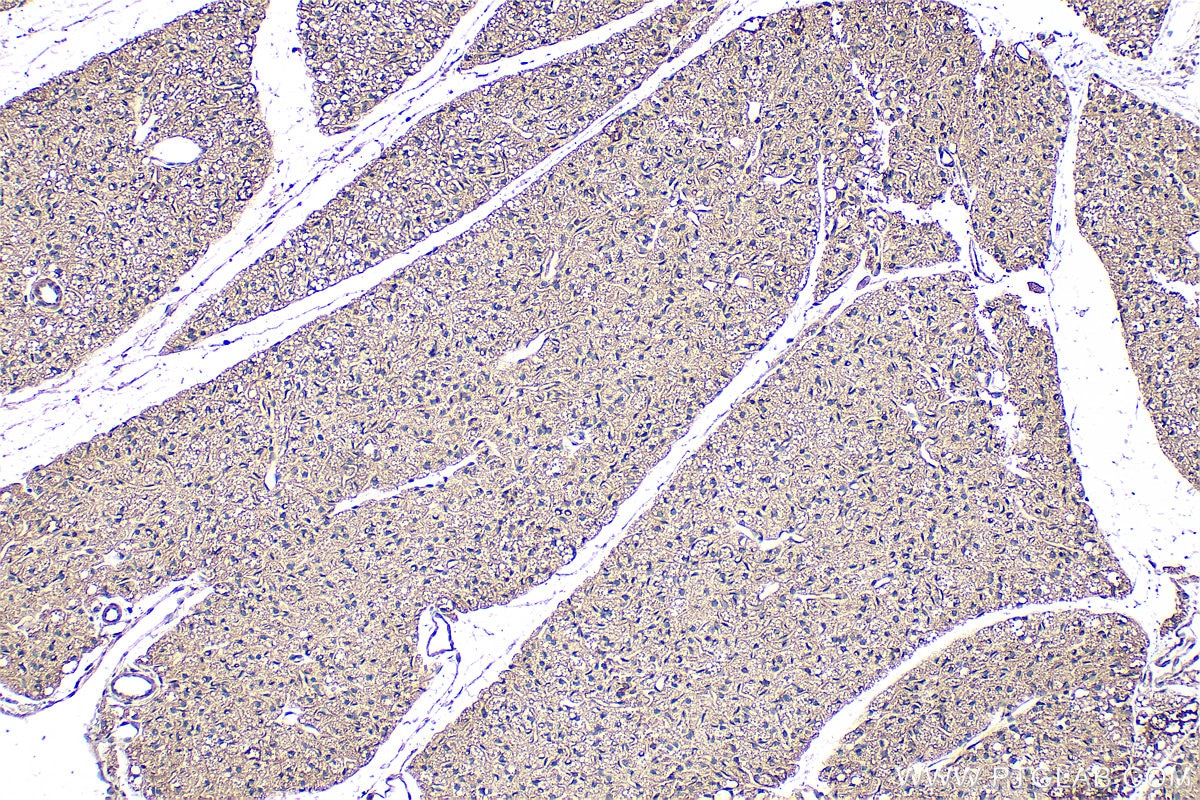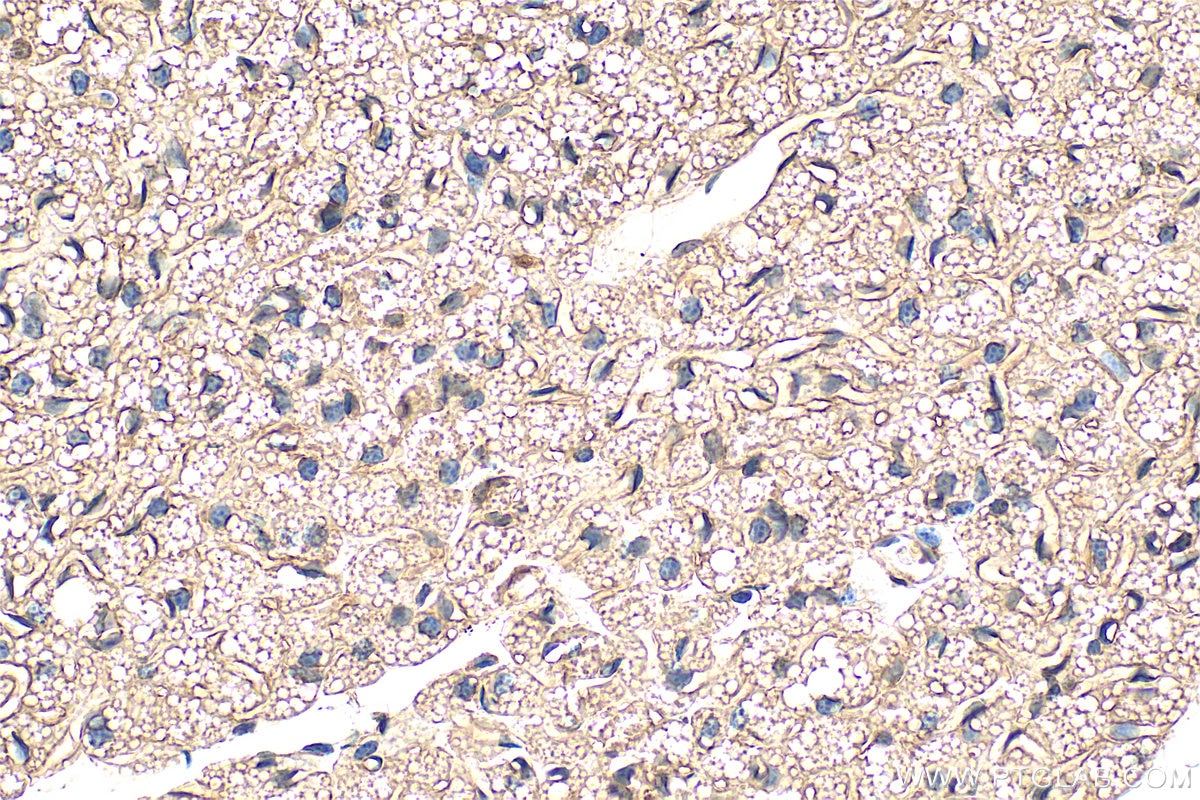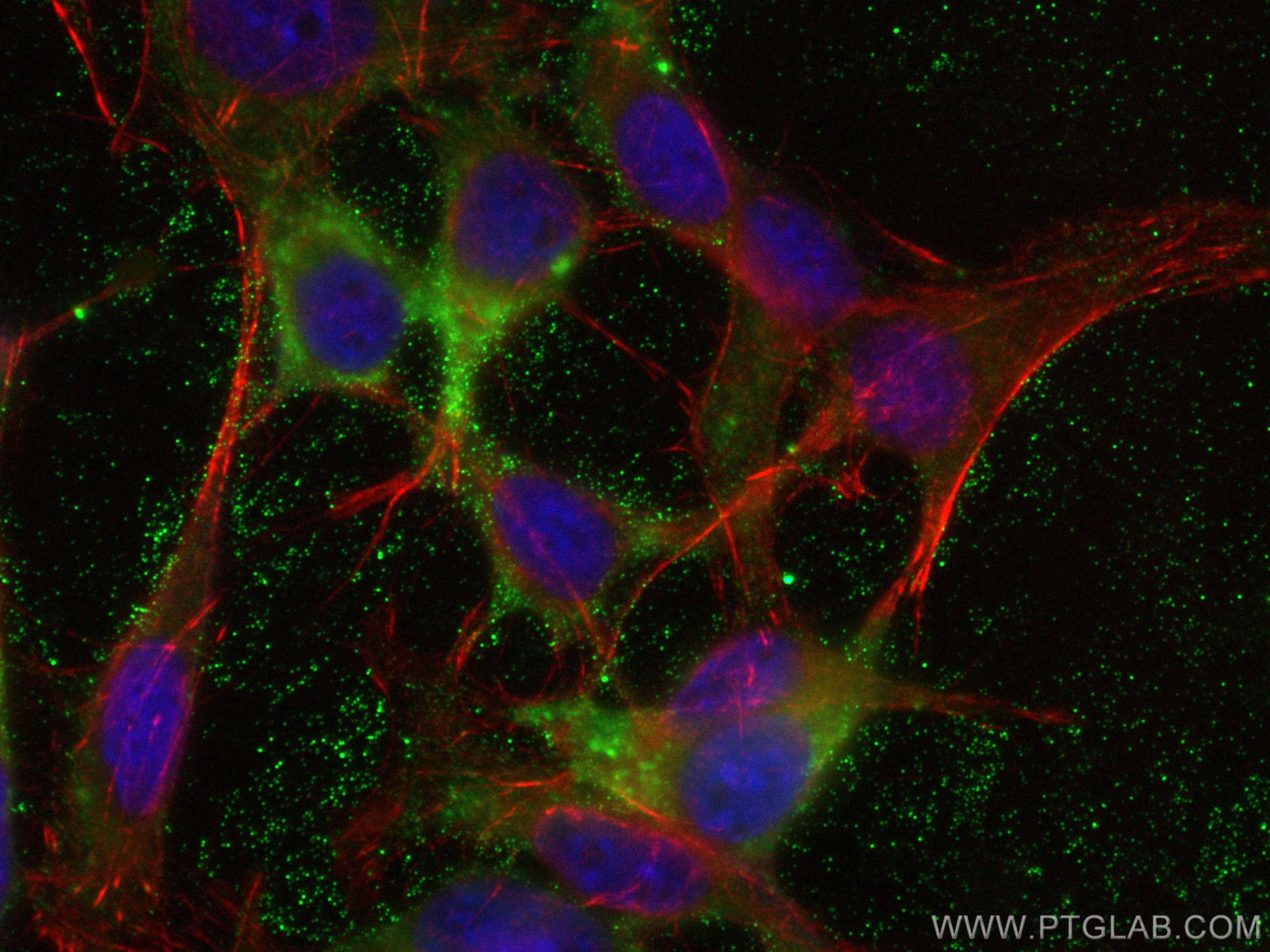Validation Data Gallery
Tested Applications
| Positive WB detected in | human adipose tissue |
| Positive IHC detected in | rat brown adipose tissue, human placenta tissue, human prostate cancer tissue, mouse brown adipose tissue, mouse skeletal muscle tissue, mouse skin tissue Note: suggested antigen retrieval with TE buffer pH 9.0; (*) Alternatively, antigen retrieval may be performed with citrate buffer pH 6.0 |
| Positive IF/ICC detected in | 3T3-L1 cells |
Recommended dilution
| Application | Dilution |
|---|---|
| Western Blot (WB) | WB : 1:500-1:2000 |
| Immunohistochemistry (IHC) | IHC : 1:200-1:800 |
| Immunofluorescence (IF)/ICC | IF/ICC : 1:200-1:800 |
| It is recommended that this reagent should be titrated in each testing system to obtain optimal results. | |
| Sample-dependent, Check data in validation data gallery. | |
Published Applications
| WB | See 7 publications below |
| IF | See 1 publications below |
Product Information
66239-1-Ig targets Adiponectin in WB, IHC, IF/ICC, ELISA applications and shows reactivity with human, mouse, rat samples.
| Tested Reactivity | human, mouse, rat |
| Cited Reactivity | human, mouse, pig |
| Host / Isotype | Mouse / IgG1 |
| Class | Monoclonal |
| Type | Antibody |
| Immunogen | Adiponectin fusion protein Ag17383 相同性解析による交差性が予測される生物種 |
| Full Name | adiponectin, C1Q and collagen domain containing |
| Calculated molecular weight | 244 aa, 26 kDa |
| Observed molecular weight | 29 kDa |
| GenBank accession number | BC096308 |
| Gene Symbol | Adiponectin |
| Gene ID (NCBI) | 9370 |
| RRID | AB_2881628 |
| Conjugate | Unconjugated |
| Form | Liquid |
| Purification Method | Protein G purification |
| UNIPROT ID | Q15848 |
| Storage Buffer | PBS with 0.02% sodium azide and 50% glycerol , pH 7.3 |
| Storage Conditions | Store at -20°C. Stable for one year after shipment. Aliquoting is unnecessary for -20oC storage. |
Background Information
Adiponectin (AdipoQ), an adipocyte-derived hormone, is one of the most abundant adipokines in the blood circulation. Adiponectin modulates a number of metabolic processes, including improving INS sensitivity and anti-inflammatory activity. The role of AdipoQ in reproduction is not yet fully understood, but the expression of AdipoQ in reproductive tissues has been observed in various animals and humans, including chicken testis, bovine ovary, and human placenta. Adiponectin exerts its effects by activating a range of different signaling molecules via binding to two transmembrane AdipoQ receptors, AdipoR1 and AdipoR2. AdipoR1 is expressed primarily in the skeletal muscle, whereas AdipoR2 is predominantly expressed in the liver. AdipoQ May play a role in cell growth, angiogenesis and tissue remodeling by binding and sequestering various growth factors.
Protocols
| Product Specific Protocols | |
|---|---|
| WB protocol for Adiponectin antibody 66239-1-Ig | Download protocol |
| IHC protocol for Adiponectin antibody 66239-1-Ig | Download protocol |
| IF protocol for Adiponectin antibody 66239-1-Ig | Download protocol |
| Standard Protocols | |
|---|---|
| Click here to view our Standard Protocols |
Publications
| Species | Application | Title |
|---|---|---|
J Cell Physiol Rapid responses of adipocytes to iron overload increase serum TG level by decreasing adiponectin. | ||
Food Funct Quercetin regulates skeletal muscle fiber type switching via adiponectin signaling. | ||
Anim Biotechnol Effect of dietary leucine supplementation on skeletal muscle fiber type transformation in weaning piglets | ||
Anim Biotechnol Leucine regulates porcine muscle fiber type transformation via adiponectin signaling pathway. | ||
Chem Biol Interact Inhibitory effects of black phosphorus nanosheets on tumor cell proliferation through downregulation of ADIPOQ and downstream signaling pathways | ||
Signal Transduct Target Ther Annexin A1 binds PDZ and LIM domain 7 to inhibit adipogenesis and prevent obesity |













